You may not find this terribly rewarding unless you're included here, so this is a good time for casual and random browsers to turn back before they get too caught up in the sweep and majesty of the proceedings and can't let go.
Late October in Switzerland, and we'll take a break from our leisure.

An hour and a half over the Grand St-Bernard Pass (through the tunnel), and we're standing in front of the Maison Bondaz (not 'House of Bondage'), a wonderful family-run 6-room chambres d'hôtes fronting directly onto the main pedestrian thoroughfare into the city, rue Saint-Anselme.

We're in the 'Caillou' room (named for the artwork on the wall, left). Squirrel is still disoriented from crossing the Alps.
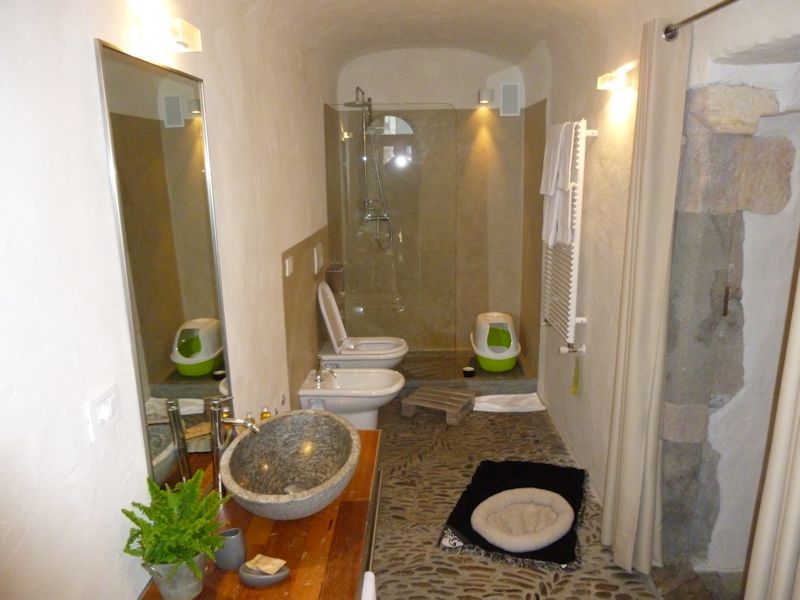
The house dates from about 1600, but the family has restored it thoroughly, and indeed artistically.

Kristin on our balcony

Our balcony seen from the back gate

The view from the balcony -- renovation and expansion of the Maison Bondaz are soon to begin, once the archaeologists have given the go-ahead.
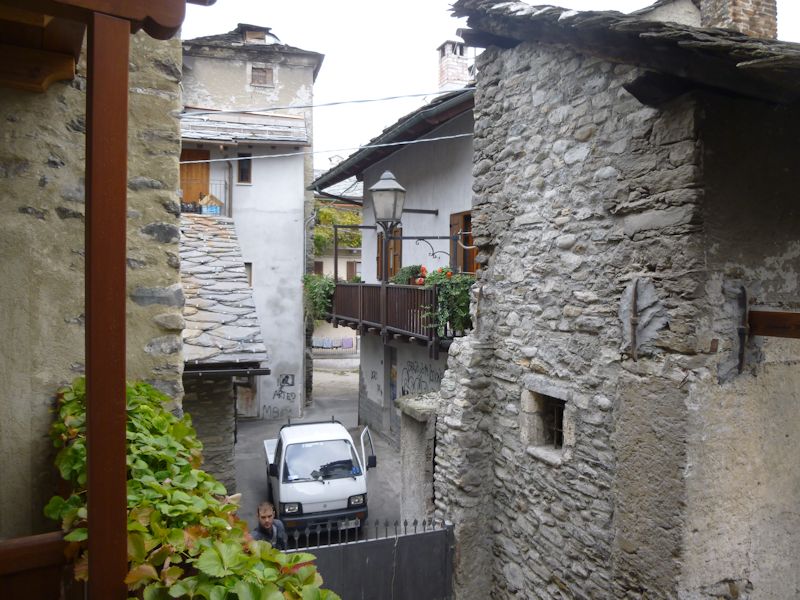
The view out the back gate (those, in fact, are the archaeologists, come for another assessment)
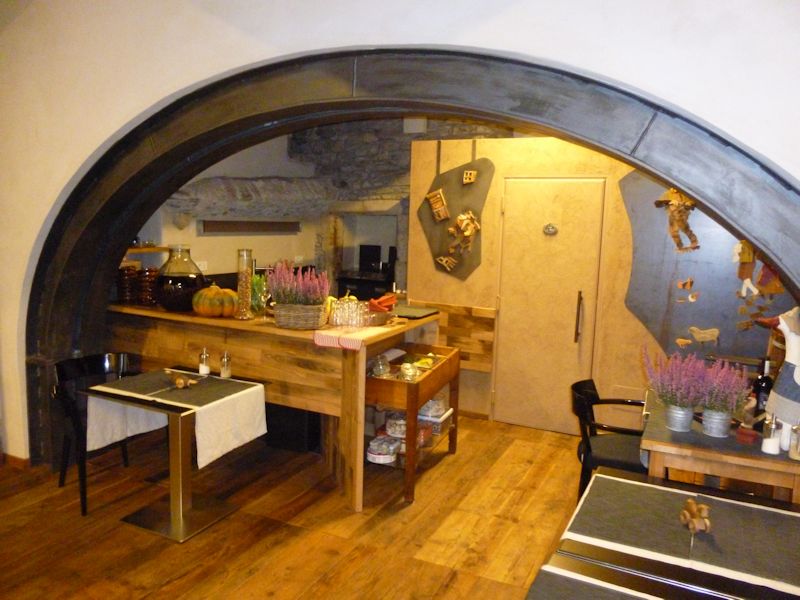
The breakfast room. The breakfast, with ample choices from a wide range of products of the terroir, is an experience in itself.
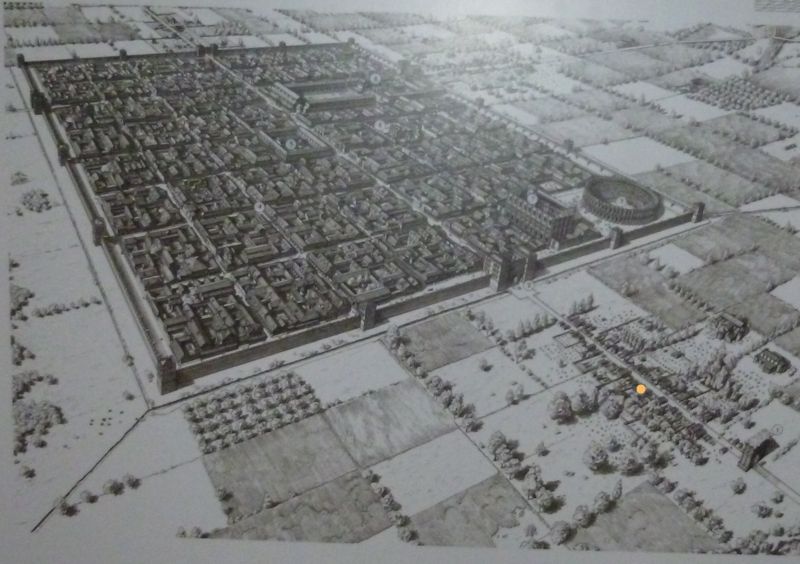
An artist's reconstruction of the Roman city of Augusta Praetoria -- our B+B is about where I've put a yellow dot: outside the Praetorian Gate on the Decumanus Maximus or main east-west thoroughfare.

The Rue Saint-Anselme, or Via Sant'Anselmo (French and Italian are both official languages of the Italian region of Valle d'Aosta), as we set off to explore
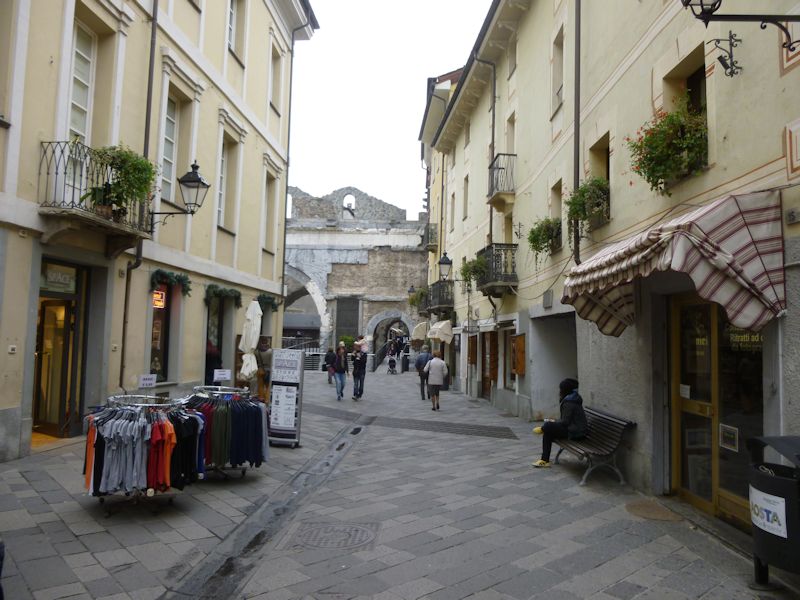
The region was inhabited from earliest times, and by Celts and Ligurians in the first millennium BC. The Romans defeated the local Salassi people in about 25 BC and established a strategic city and garrison of retired legionnaires here, Augusta Praetoria, to command the main seasonal routes over the Western Alps, the Grand and Little St-Bernard Passes, into Gaul and Burgundian territories.

This is what remains of the Praetorian Gate, the eastern and main gate into the Roman city, dating from the first century AD.

Views of the Praetorian Gate on a bleak sort of day
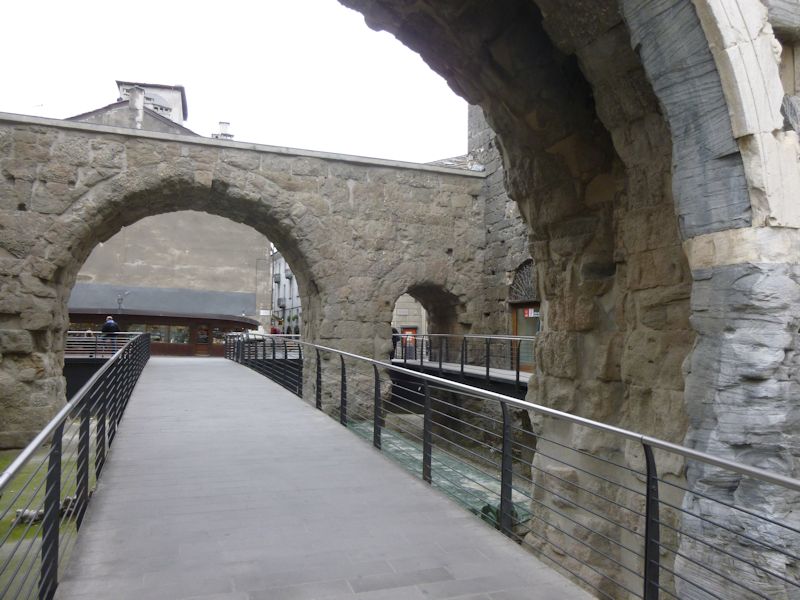
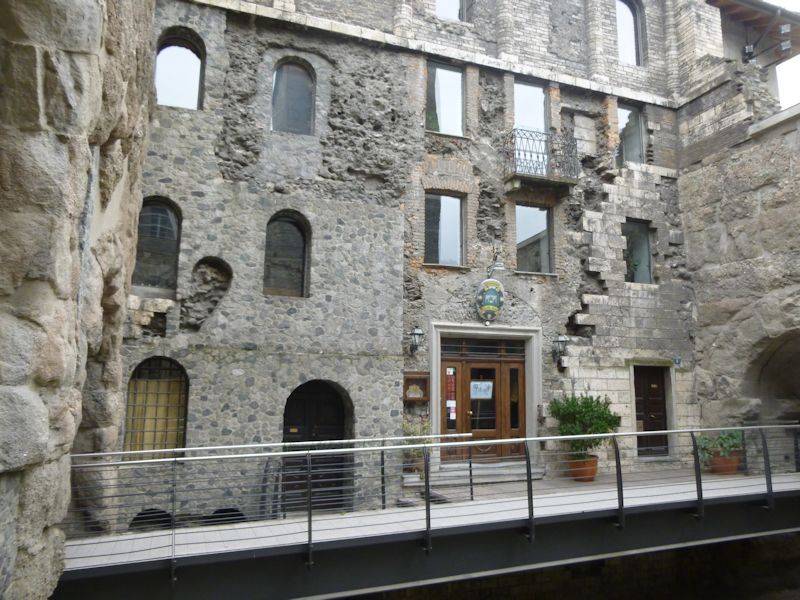
A restaurant on the far side; the tourist office is on this side


We proceed along what is now called the Via Porta Praetoria towards the city centre.
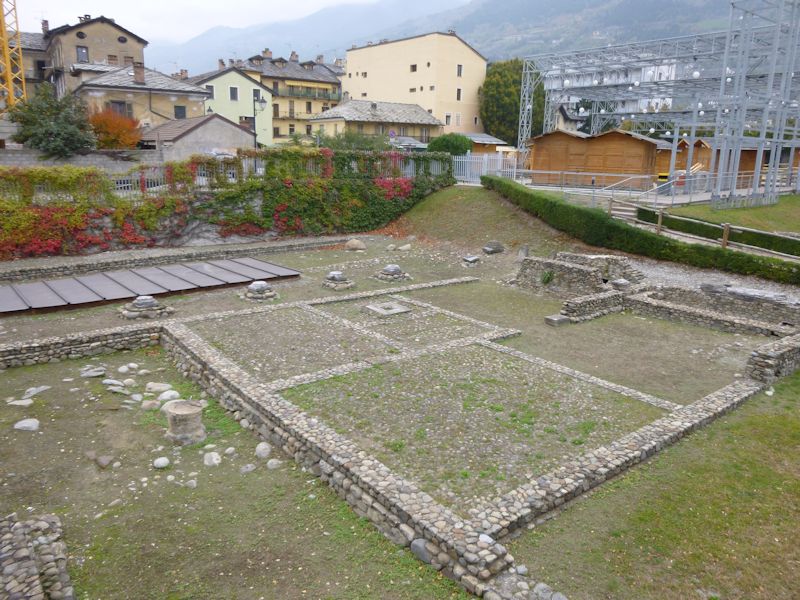
A pause to look at a Roman domus or what remains of it

Following the relaxation of Roman administration of the region in the 5th century, the Aosta Valley passed more or less under the control of Visigoths, Ostrogoths, Burgundians, and Franks, then under the brief Byzantine resurgence in the mid-6th century, then under the Longobards or Lombards, and at last under Charlemagne's Franks in the late 8th century.

The main square, the Piazza Chanoux, boasting the city hall, dating from 1835-41, connected to the Hôtel des Etats or Council of State, from about 1730. The piazza itself was laid out by Amadeus VI, the Green Count of Savoy, in 1352.

In the early 11th century, the dynasty of Savoie, in the Alpine regions south of Lake Geneva, was granted the Aosta valley as counts of the empire by Emperor Conrad II in an effort to impose some order on the local strongmen with their proliferating toll-collecting castles throughout the region, many of which can still be visited, like Bard, Cly, and Fenis.

A beautiful piazza, probably better in sunlight. One of the best detailed histories in English of Aosta and the Piedmont region in the Middle Ages can be found in Eugene Cox, The green count of Savoy: Amadeus VI and transalpine Savoy in the fourteenth century (Princeton UP, 1967).
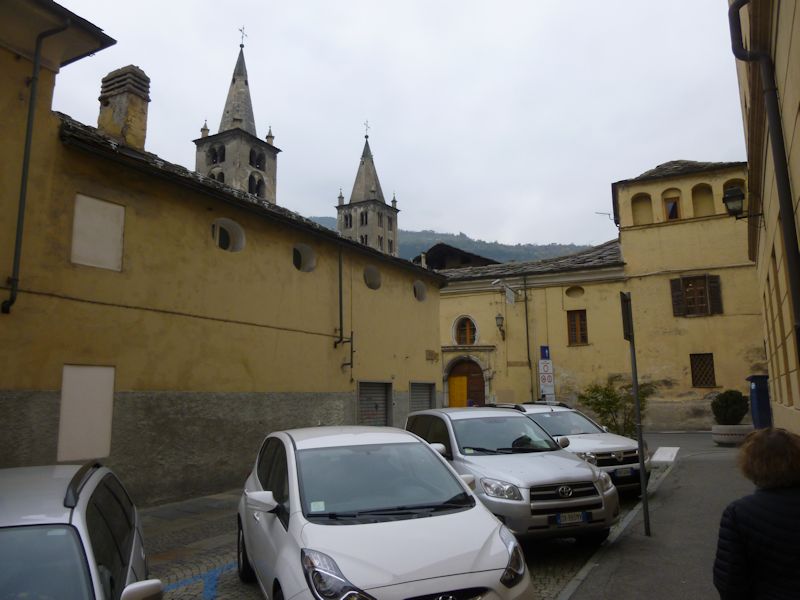
We're hunting all about for the Cathedral -- ah, there it is. The philosopher-saint Archbishop Anselm of Canterbury was born here in Aosta, by the way, in the early 11th century.
The Cathedral of the Assumption of Mary and St John the Baptist
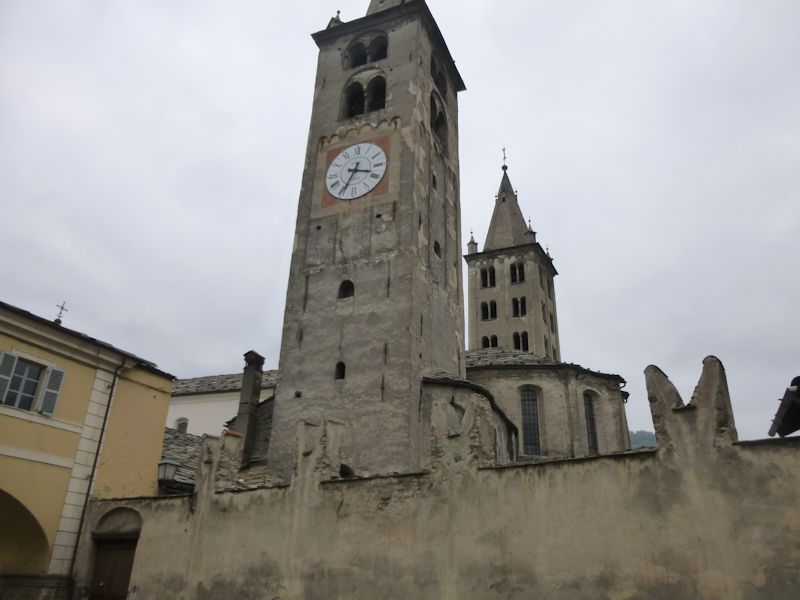
A Christian cathedral had been built on this spot in the late 4th century, but it was replaced in the 11th century, at the instance of a different Bishop Anselm of Aosta, by the present edifice dedicated to the Assumption of Mary and St John the Baptist. These Romanesque clock towers remain, as well as famous frescoes from the 10th century 'Ottonian period' that we didn't get to see.

The front of the neoclassical façade dates from 1848, but . . .
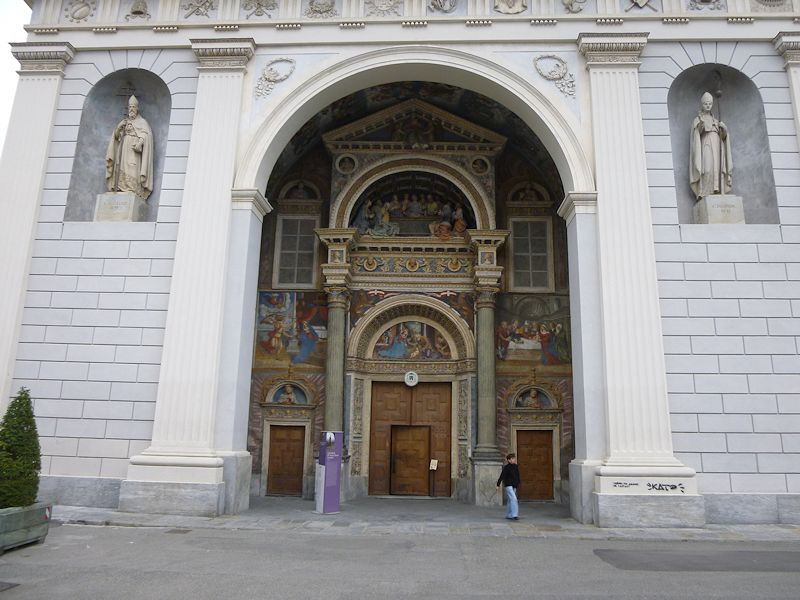
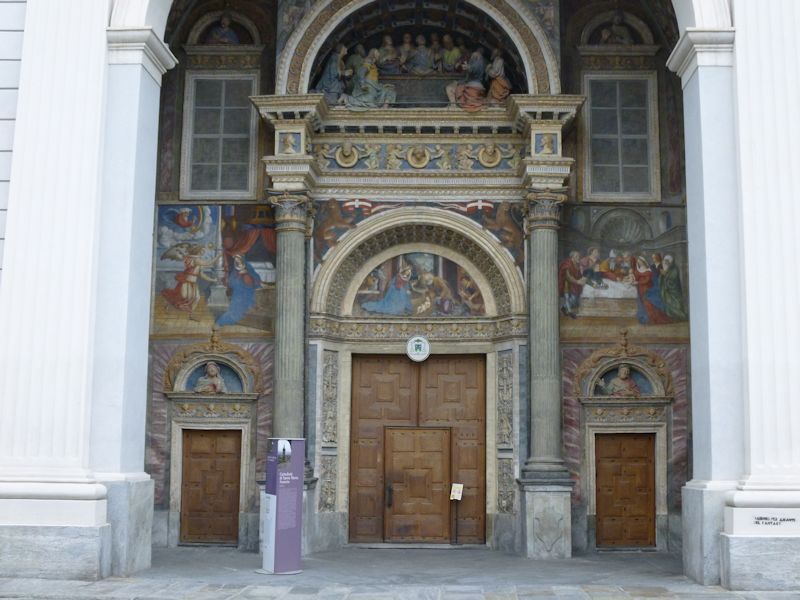
. . . the frescoes and terracotta figures in the atrium, showing the life of the Virgin, were created in the 16th century.
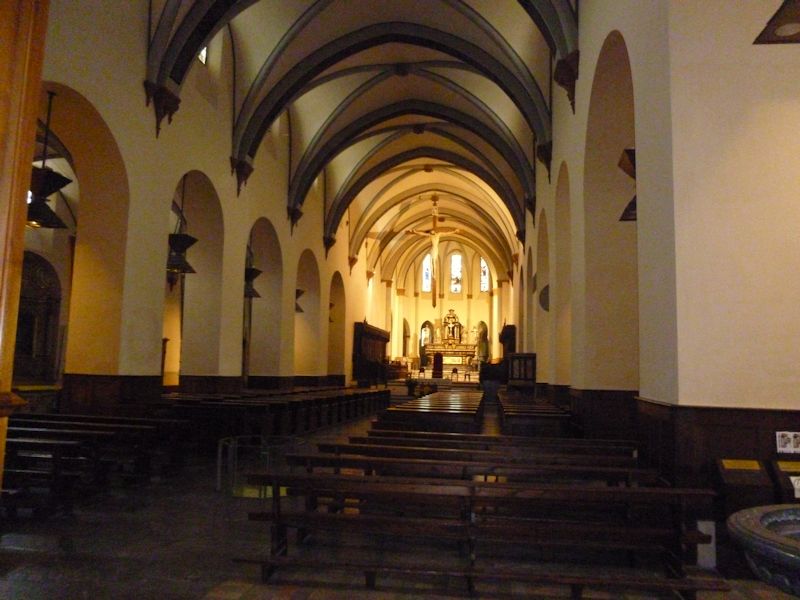
The central aisle
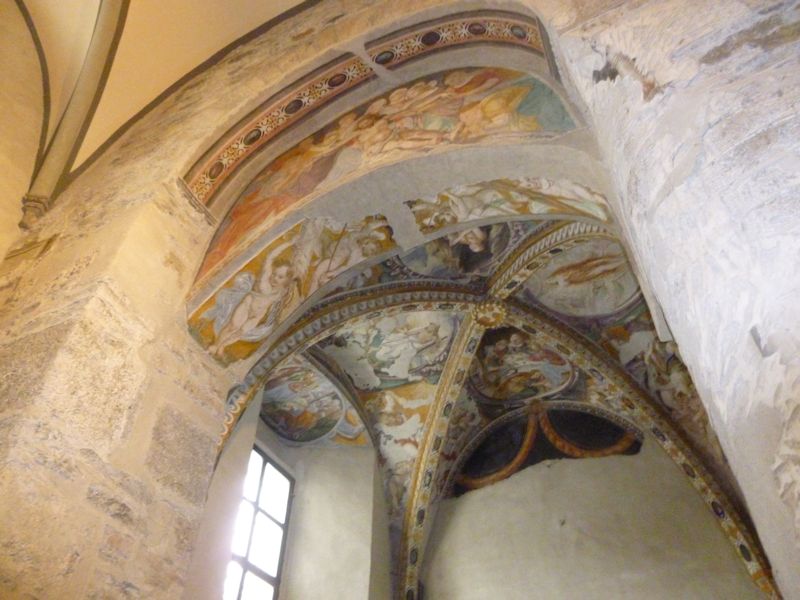
In the side chapel
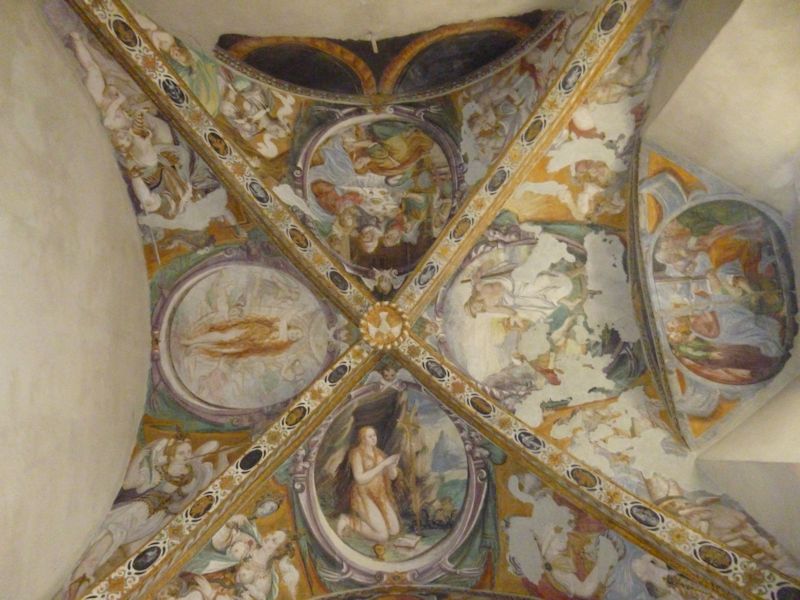
Apparently, two shots of Mary Magdalene in Penitent mode in the left and bottom panels -- one of her classic medieval representations was naked with long reddish hair; but there were others.
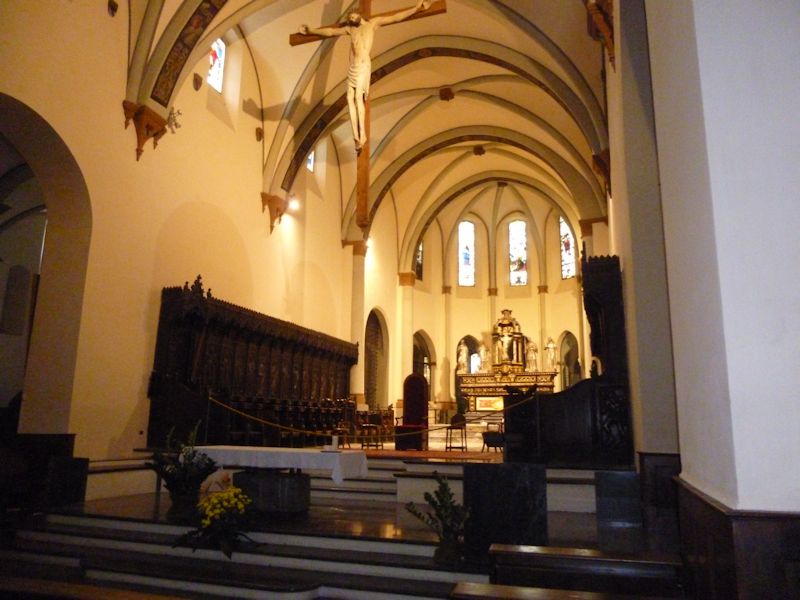
The presbytery and choir

A 12th century mosaic on the floor of the presbytery showing the twelve months of the year
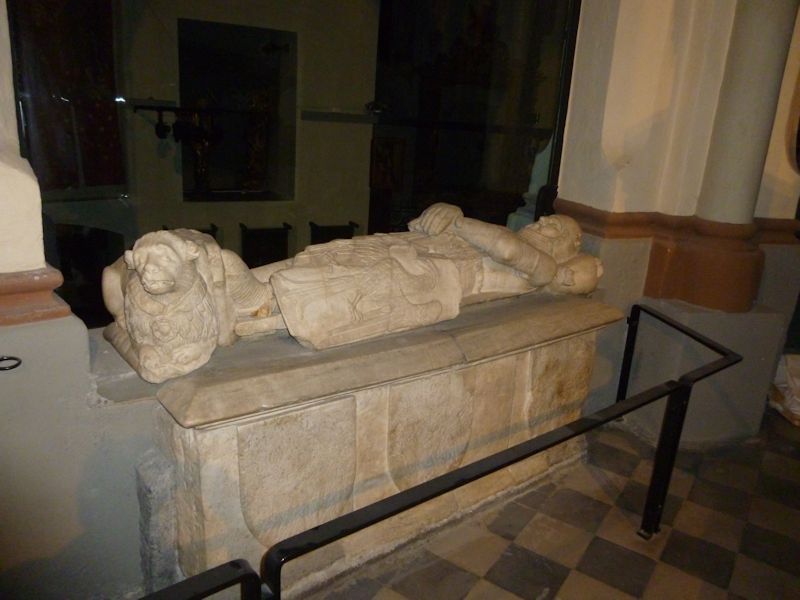
A requisite knight in full kit, with the expected faithful dog at his feet (or is that a lion?); he's Thomas II of Savoy in fact, 1199-1259, an active fellow in his time -- a younger son of Count Thomas I of Savoy, he began as a canon in the church at Lausanne, left the church and was made Count of Flanders by Louis IX of France, and was showered with gifts and a stipend by Henry III of England when his niece Eleanor gave birth to the future Edward I. He was excommunicated for participating in the siege of Vercelli in 1243, but forgiven by the next Pope, Innocent IV -- his second wife, Beatrice, was the pope's niece. When in 1255 he was captured in a battle against the city of Asti and imprisoned in Turin, Henry III arrested all Lombards in England and Louis IX jailed a few hundred Asti merchants trading in France. His brothers came down from Savoy with an army and sprang him. He died a few years later in Chambéry, then the Savoie capital.
Amongst his siblings were Amedeo the Count of Savoie, Archbishops of Canterbury and of Lyon, Bishops of Valence and of Maurienne, the Counts of Larches and of Lioches, Aymon the Lord of Chablais (where we live on the Swiss side), Peter the Earl of Richmond in England and Avita, who married the 7th Earl of Devon; not to mention Beatrice, who married the Count of Provence and was the mother of four queens-consort.
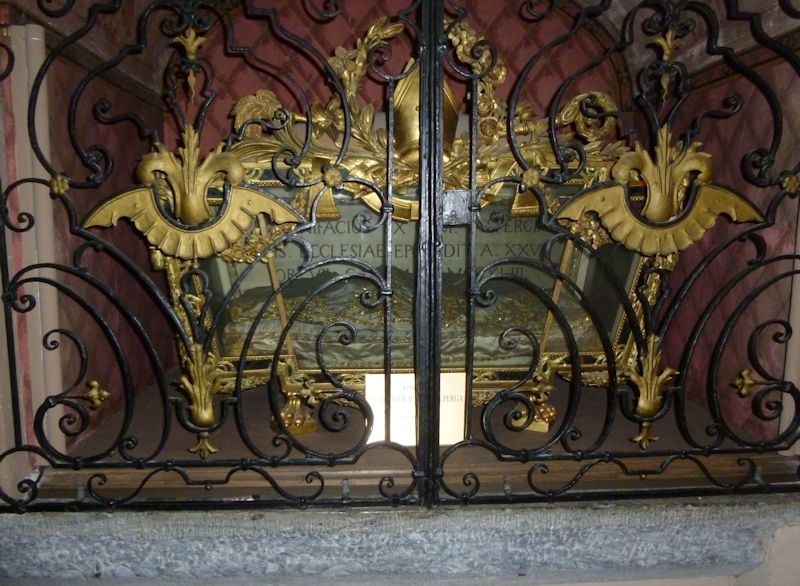
That's enough of that.

Next door to the Cathedral is hidden the "Criptoportico", part of what would in Augustan times have been the Forum and temple complex.
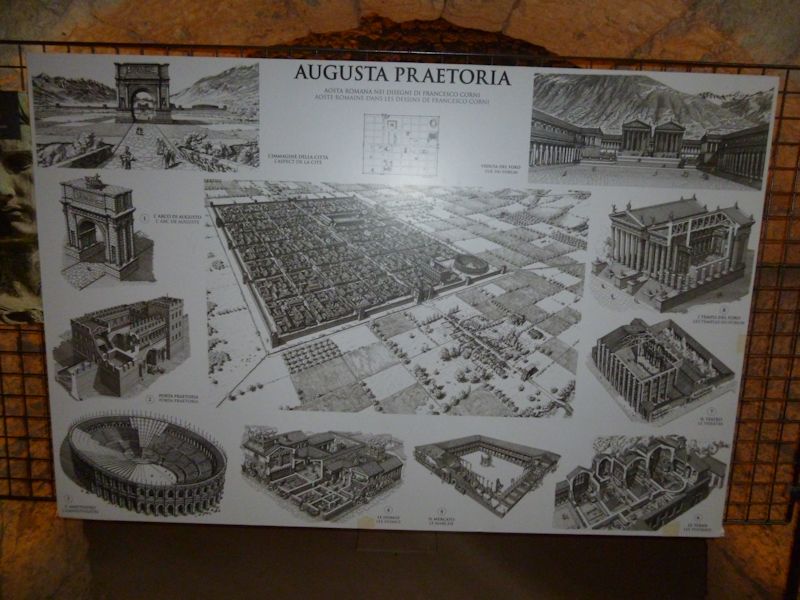
A reconstruction of the Roman originals by Francesco Corni
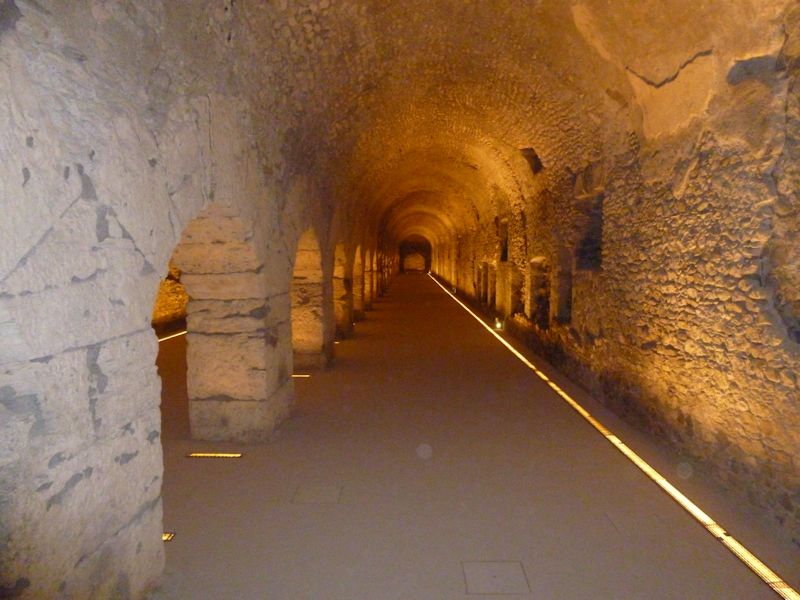
The Cryptoportique consists of long corridors of this . . . the guide at the door gave it his best shot by speculating that they were important for sacred processions around the temple complex. (Other suggestions have been a covered market, warehouses, etc.)

The Romanesque cathedral towers
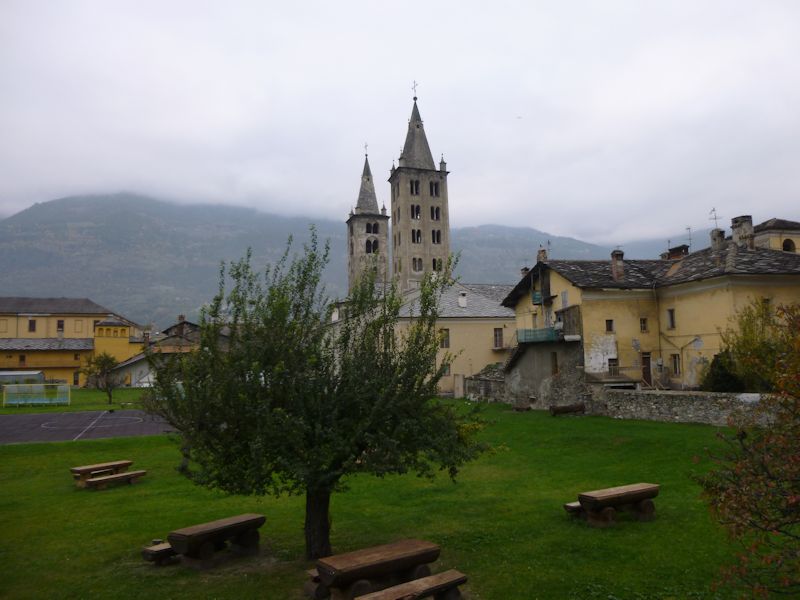

On the way to the Bailiffs' Tower (now apparently part of a music school). We're on the Via Anfiteatro, maybe all that remains of the Roman amphitheatre that was just north of the theatre. Who knows? Any remains of it are hidden in the grounds of the Convent of St Catherine on the right.
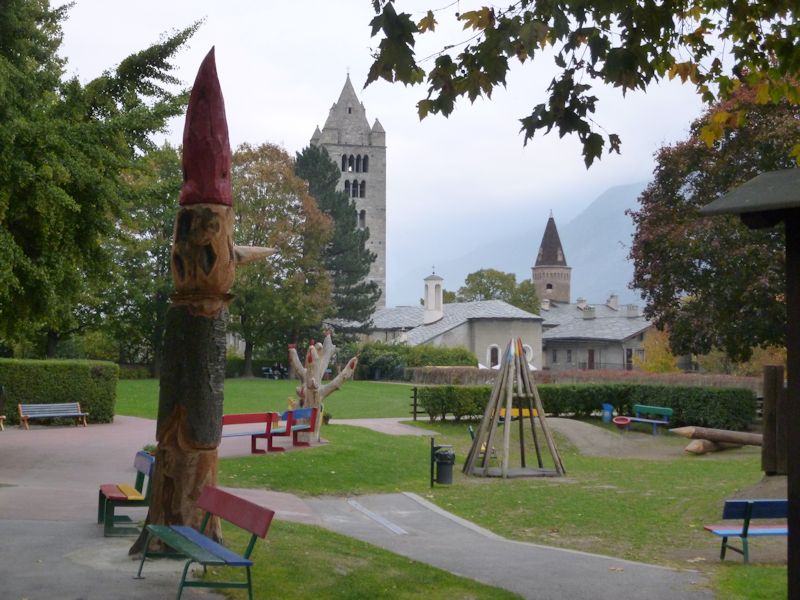
An imaginative playground, with the belltower of Saint Orso's
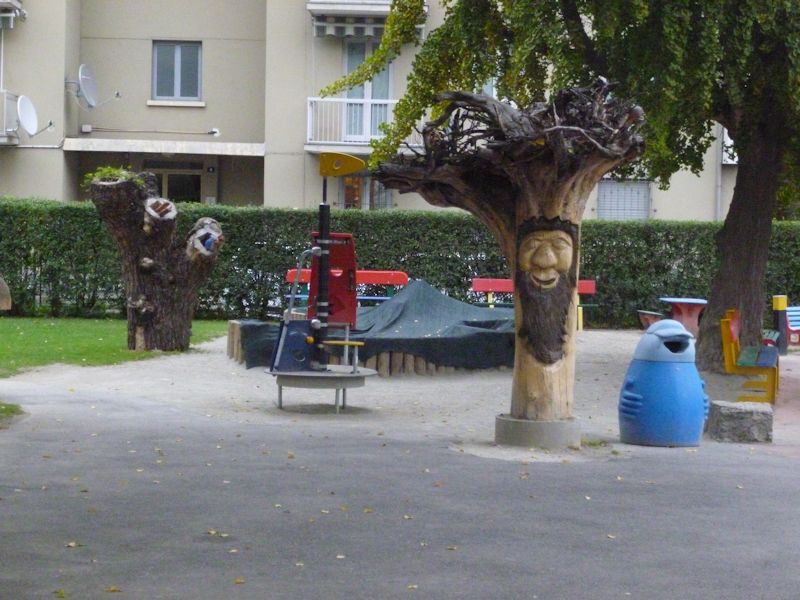
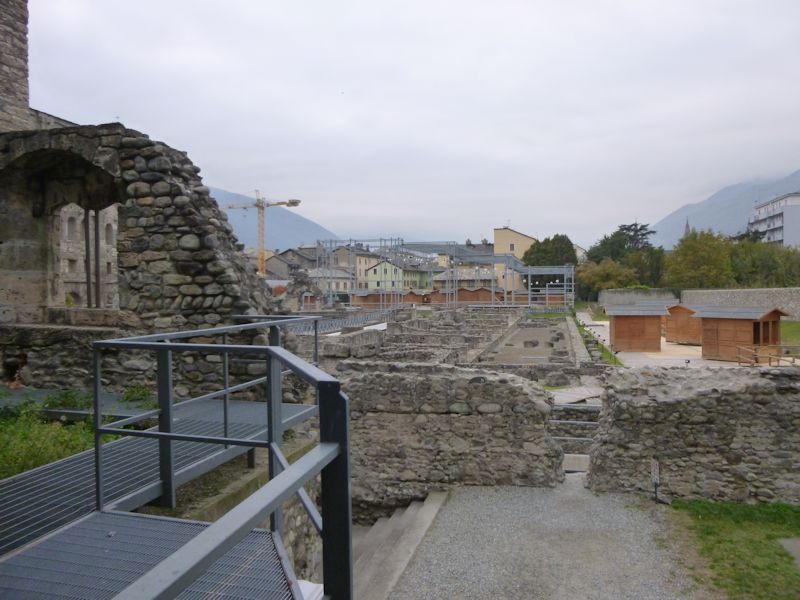
This is the main Roman archaeological area, around the ancient theatre, in the heart of the present city near the eastern Roman gate. It dates from Augustan times, the early 1st century AD, and was restored in 2009.
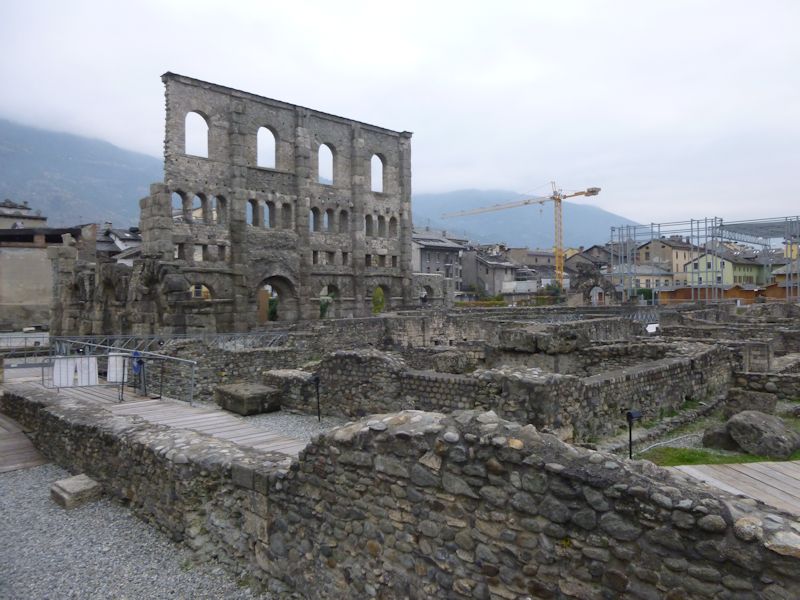
The south wall of the theatre, with the remains of the rest of the structure. The amphitheatre, seen just to the north of the theatre in Francesco Corni's plan, seems to be entirely gone.
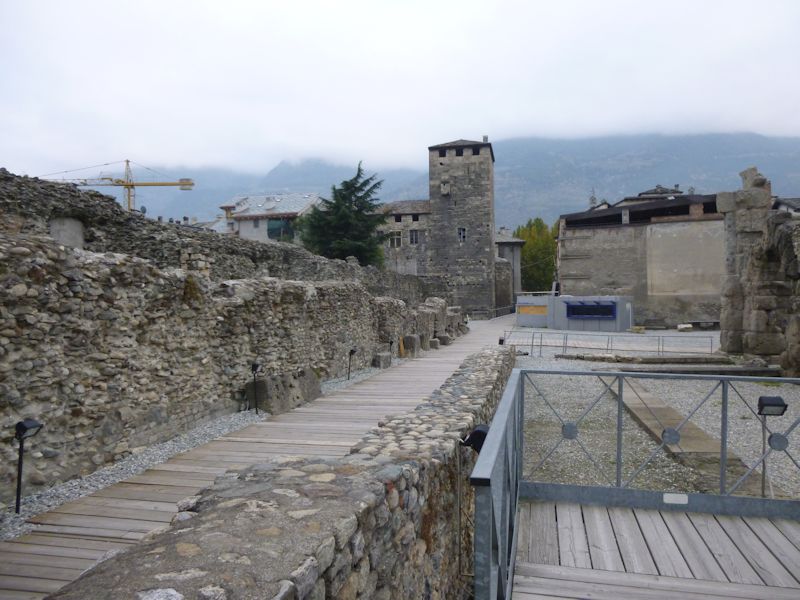
From the east edge of the theatre, along the original city wall, looking south at the tower adjoining the Porta Praetoria on the main east-west street
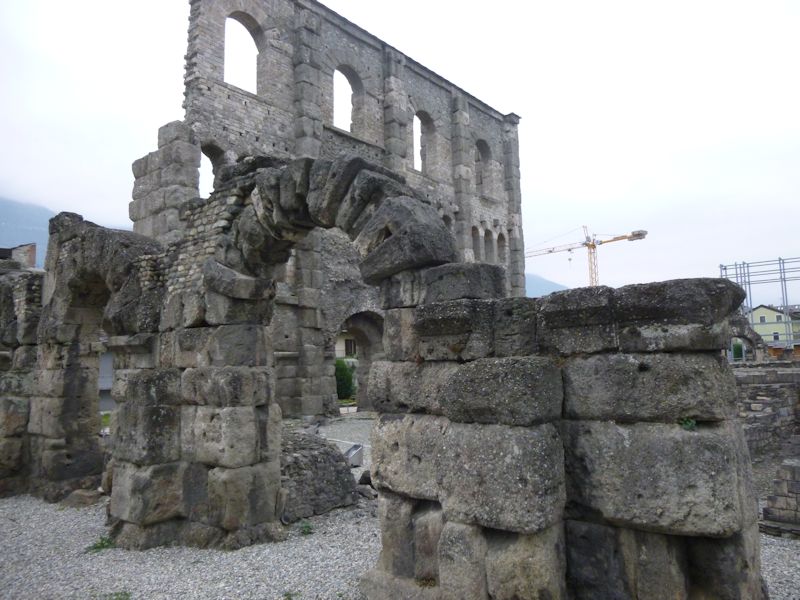
Arches of the theatre
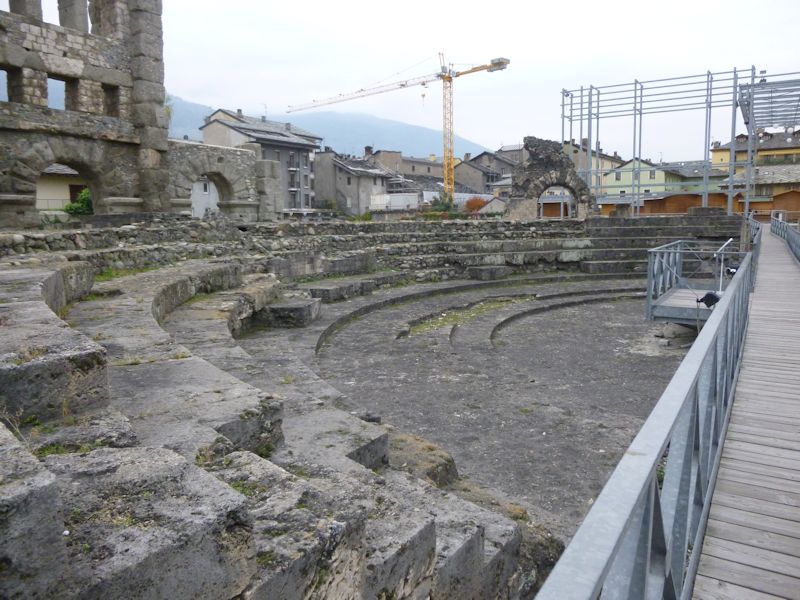
The interior of the theatre, which has been estimated to have been capable of seating 3 to 4 thousand spectators.

The interior and south wall

From the middle of the theatre looking east at the Tour Fromage, built in the 12th century along the Roman city's eastern wall by the De Casei family ('fromage' ['cheese'] in French).
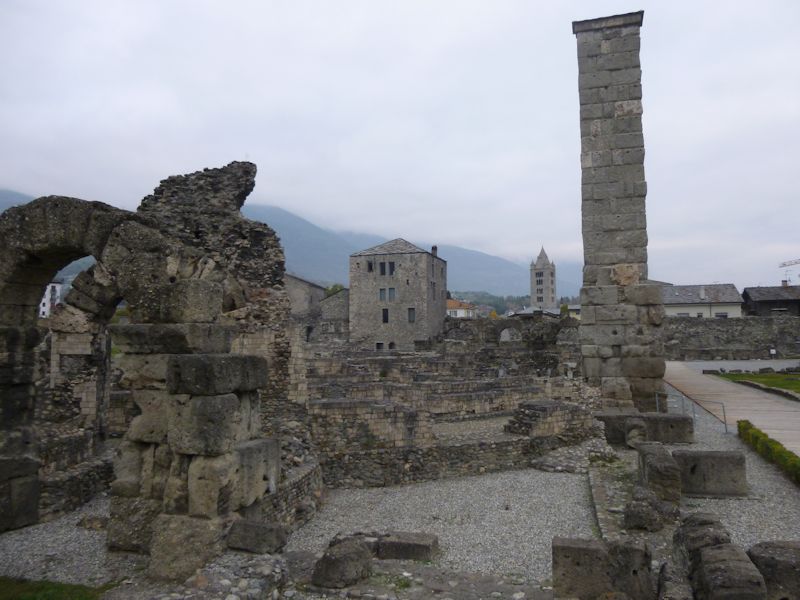
The southern wall of the theatre end-on, with the Tour Fromage and the belltower of the Sant'Orso church

Here's an old friend, near the carpark by the city gate

Back in 2003, that fine piece of work had a more prominent place in the main piazza |
The next day . . .
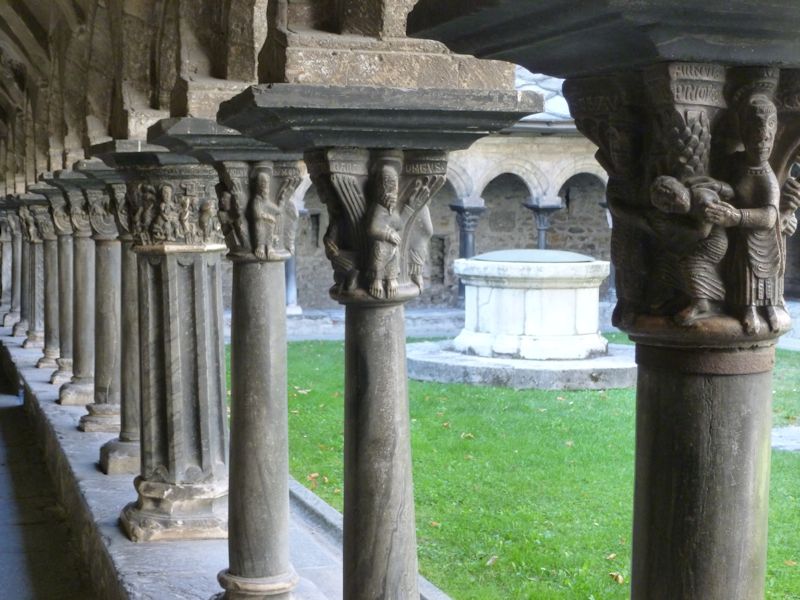
Some more sightseeing, and then . . .

. . . a hike in the Valpelline.





 Dwight Peck's personal website
Dwight Peck's personal website




















































